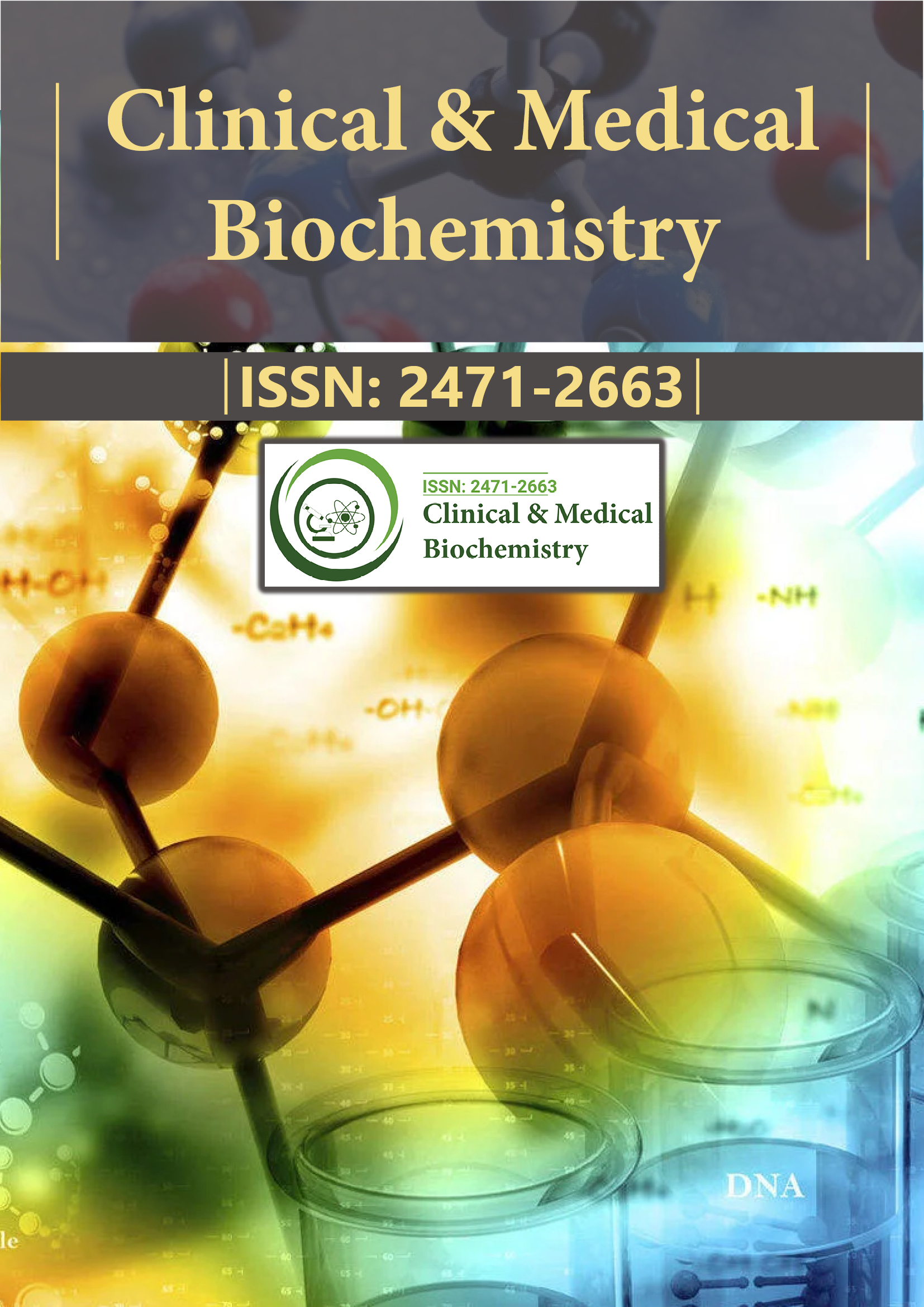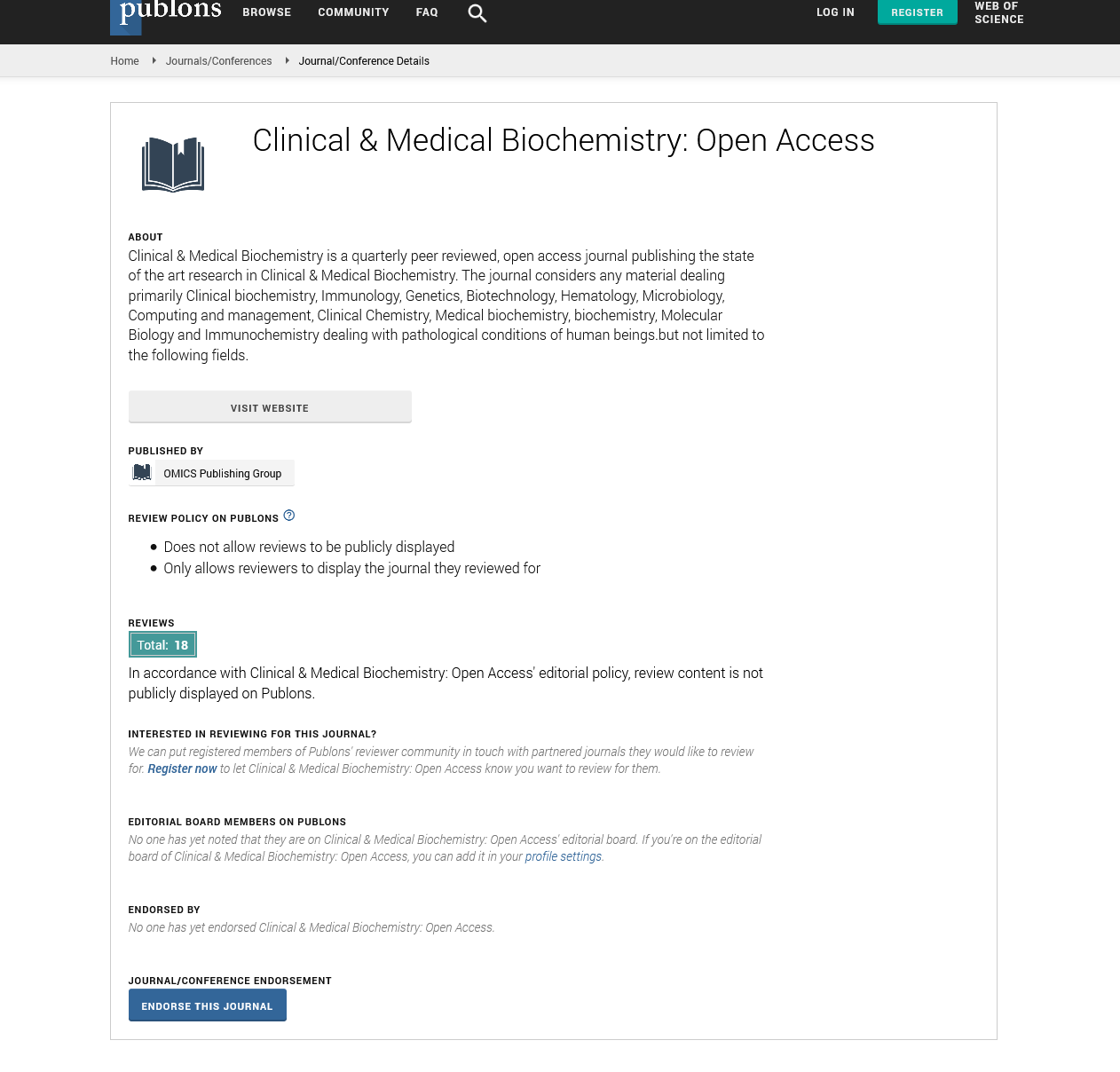Indexed In
- RefSeek
- Directory of Research Journal Indexing (DRJI)
- Hamdard University
- EBSCO A-Z
- OCLC- WorldCat
- Scholarsteer
- Publons
- Euro Pub
- Google Scholar
Useful Links
Share This Page
Journal Flyer

Open Access Journals
- Agri and Aquaculture
- Biochemistry
- Bioinformatics & Systems Biology
- Business & Management
- Chemistry
- Clinical Sciences
- Engineering
- Food & Nutrition
- General Science
- Genetics & Molecular Biology
- Immunology & Microbiology
- Medical Sciences
- Neuroscience & Psychology
- Nursing & Health Care
- Pharmaceutical Sciences
Perspective - (2025) Volume 11, Issue 2
Cardiovascular Disease: Causes, Risk Factors, Prevention, Diagnosis, Treatment, and Global Health
Frank Anania*Received: 30-Apr-2025, Manuscript No. CMBO-25-29628; Editor assigned: 02-May-2025, Pre QC No. CMBO-25-29628; Reviewed: 16-May-2025, QC No. CMBO-25-29628; Revised: 23-May-2025, Manuscript No. CMBO-25-29628; Published: 30-May-2025, DOI: 10.35841/2471-2663.25.11.251
Description
Cardiovascular disease is a broad term that encompasses a range of conditions affecting the heart and blood vessels, including coronary artery disease, heart failure, arrhythmias, stroke and peripheral arterial disease. It is the leading cause of death globally, responsible for millions of deaths annually and poses a major challenge to healthcare systems worldwide. Cardiovascular disease results from a complex interplay of genetic, behavioral, metabolic and environmental factors that cause damage to the cardiovascular system over time. Understanding the mechanisms, risk factors and preventive strategies associated with cardiovascular disease is essential for reducing its burden and improving population health outcomes.
The most common form of cardiovascular disease is coronary artery disease, which occurs when the coronary arteries become narrowed or blocked due to the buildup of atherosclerotic plaques. These plaques consist of cholesterol, fatty substances, calcium and cellular debris, which accumulate on the inner walls of arteries and restrict blood flow to the heart muscle. Reduced blood flow can cause chest pain, or angina and complete blockage can result in a heart attack, also known as myocardial infarction. Atherosclerosis can affect not only the coronary arteries but also other arteries in the body, leading to stroke when blood flow to the brain is compromised or peripheral arterial disease when circulation to the limbs is reduced.
Numerous risk factors contribute to the development and progression of cardiovascular disease. These are typically categorized as modifiable and non-modifiable factors. Non-modifiable risk factors include age, sex, family history and genetic predisposition. Men are generally at higher risk at an earlier age, though post-menopausal women also face significantly increased risk. Modifiable risk factors, which can be influenced by lifestyle and behavior, include hypertension, high cholesterol, smoking, diabetes, physical inactivity, obesity, poor diet and excessive alcohol consumption. Among these, high blood pressure and elevated Low-Density Lipoprotein (LDL) cholesterol are especially significant contributors to atherosclerotic plaque formation and vascular damage.
Prevention strategies play a critical role in reducing the incidence and impact of cardiovascular disease. Primary prevention focuses on avoiding the development of disease in healthy individuals by promoting heart-healthy behaviors such as a balanced diet rich in fruits, vegetables, whole grains and lean proteins; regular physical activity; maintaining a healthy weight; smoking cessation; and controlling blood pressure, cholesterol and glucose levels. Secondary prevention targets individuals who already have cardiovascular disease or are at high risk and aims to prevent further complications through medical treatment, lifestyle modification and regular monitoring. Public health initiatives, education and access to healthcare services are essential components of effective prevention programs.
Diagnosis of cardiovascular disease relies on a combination of patient history, physical examination, laboratory tests and imaging studies. Common diagnostic tools include Electrocardiography (ECG), echocardiography, stress testing, blood tests for cardiac biomarkers such as troponin, lipid profiles and imaging techniques like coronary angiography and Computed Tomography (CT) scans. Early diagnosis is crucial for initiating timely and appropriate treatment to prevent irreversible damage and reduce the risk of fatal events. Regular screening is recommended for individuals with risk factors or a family history of cardiovascular disease to detect early signs of dysfunction and intervene before symptoms appear.
Treatment of cardiovascular disease depends on the specific condition, its severity and the overall health of the patient. Lifestyle modification is the cornerstone of all treatment plans and may be combined with pharmacological therapy to manage symptoms and reduce risk. Common medications used include antihypertensives, statins, antiplatelet agents, beta-blockers and anticoagulants. In some cases, medical procedures or surgeries may be necessary, such as angioplasty and stent placement to open narrowed arteries, Coronary Artery Bypass Grafting (CABG), or implantation of pacemakers and defibrillators to correct abnormal heart rhythms. Ongoing care and adherence to prescribed therapies are essential for long-term management and to prevent recurrent cardiovascular events.
Cardiovascular disease also has a significant psychological and economic impact. Individuals diagnosed with heart disease often experience anxiety, depression and reduced quality of life. The cost of treatment, hospitalization, medications and lost productivity contributes to a substantial economic burden on both individuals and healthcare systems. In low- and middle-income countries, limited access to preventive care and treatment services exacerbates the challenge, leading to higher mortality rates and greater social impact. Addressing the social determinants of health, such as education, income and access to nutritious food, is essential for reducing disparities in cardiovascular disease outcomes.
Globally, the burden of cardiovascular disease continues to rise due to aging populations, urbanization and the increasing prevalence of risk factors such as sedentary lifestyles and unhealthy diets. However, significant progress has been made in reducing mortality rates in high-income countries through improved awareness, better risk factor control, early diagnosis and advanced treatment options. International organizations such as the World Health Organization advocate for integrated strategies to prevent and control cardiovascular disease, including policy initiatives to reduce salt and trans fat in the food supply, promote physical activity and expand access to essential healthcare services.
Conclusion
In conclusion, cardiovascular disease remains a major public health concern that requires coordinated efforts at the individual, community and global levels. By understanding the causes, recognizing the risk factors and implementing effective prevention and treatment strategies, it is possible to reduce the prevalence of cardiovascular disease and improve quality of life for millions of people worldwide. Ongoing research, innovation and commitment to health equity will be vital in overcoming the challenges associated with this widespread and complex group of conditions.
Citation: Anania F (2025). Cardiovascular Disease: Causes, Risk Factors, Prevention, Diagnosis, Treatment and Global Health Impact. Clin Med Bio Chem. 11:251.
Copyright: © 2025 Anania F. This is an open-access article distributed under the terms of the Creative Commons Attribution License, which permits unrestricted use, distribution and reproduction in any medium, provided the original author and source are credited.

